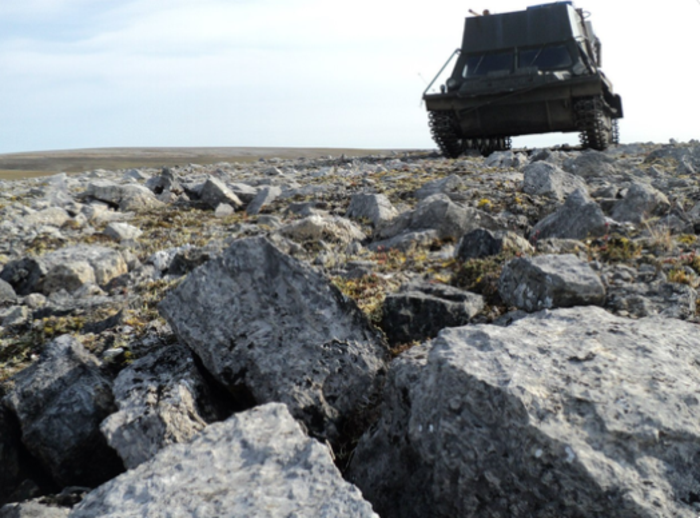A new study headed by geologists from the University of Bonn, Germany, attempted to compare the temporal and spatial distribution of methane concentrations in the air of northern Siberia with the help of geological maps.
 Limestone outcrop on the Taymyr Peninsula in North Siberia, in one of the areas where increased methane concentrations appeared in summer 2020. Image Credit: Dmitry Zastrozhnov.
Limestone outcrop on the Taymyr Peninsula in North Siberia, in one of the areas where increased methane concentrations appeared in summer 2020. Image Credit: Dmitry Zastrozhnov.
The outcomes of the study showed that the methane concentrations in the air in the year following the heatwave pointed out that the increased gas emission resulted from limestone formations. The study was published in Proceedings of the National Academy of Sciences (PNAS).
The northern hemisphere is permanently covered by frozen permafrost, particularly in northern Asia and North America. In case they thaw in the warming conditions, that could be dangerous, as methane and CO2 are dispersed during thawing, and tend to increase the anthropogenic greenhouse gas effect.
Methane is particularly dangerous here because its warming potential is many times higher than that of CO2.
Dr Nikolaus Froitzheim, Professor, Institute of Geosciences, University of Bonn
Skeptics are already debating about an approaching “methane bomb.” But earlier forecasts have shown that greenhouse gases emitted from thawing permafrost will add “only” about 0.2 °C to global warming by 2100.
This prediction has currently been contradicted by new research performed by Nikolaus Froitzheim and his collaborators Jaroslaw Majka (Krakow/Uppsala) and Dmitry Zastrozhnov (St. Petersburg).
A majority of the earlier research works were able to handle only emissions discharged from the decay of animal and plant remains present in the permafrost soils themselves. In the present study, the research team headed by Nikolaus Froitzheim compared the methane concentration in Siberian air, which was identified using geological maps and satellite-based spectroscopy.
The team observed a remarkably higher concentration in two fields of northern Siberia—the Taymyr Fold Belt and the rim of the Siberian Platform. A notable point about the two elongated regions is the formation of bedrock by limestone from the Paleozoic era (the period from around 541 million years ago to about 251.9 million years ago).
In both areas, the increased concentration is exposed during the extreme heatwave in summer 2020 and continues for several months later. However, the reason for the occurrence of additional methane was questioned.
The soil formations in the observed areas are very thin to nonexistent, making methane emission from the decay of organic soil matter unlikely.
Dr Nikolaus Froitzheim, Professor, Institute of Geosciences, University of Bonn
Dr Froitzheim and his team proposed that the cave and fracture system in the limestone, which has been blocked by a mixture of ice and gas hydrate, turned out to be porous upon warming.
As a result, natural gas being mainly methane from reservoirs within and below the permafrost can reach the Earth’s surface.
Dr. Nikolaus Froitzheim, Professor, Institute of Geosciences, University of Bonn
The researchers are planning to work on this hypothesis using measurements and model calculations. This would help reveal the pace at which natural gas may be discharged.
Dr Froitzheim concluded, “The estimated amounts of natural gas in the subsurface of North Siberia are huge. When parts of this will be added to the atmosphere upon thawing of the permafrost, this could have dramatic impacts on the already overheated global climate.”
Participating Institutions
The research was a collaboration between the universities of Bonn, Uppsala, and AGH Krakow, as well as the Karpinsky Russian Geological Research Institute in St. Petersburg.
Journal Reference:
Froitzheim, N., et al. (2021) Methane release from carbonate rock formations in the Siberian permafrost area during and after the 2020 heat wave. Proceedings of the National Academy of Sciences. doi.org/10.1073/pnas.2107632118.